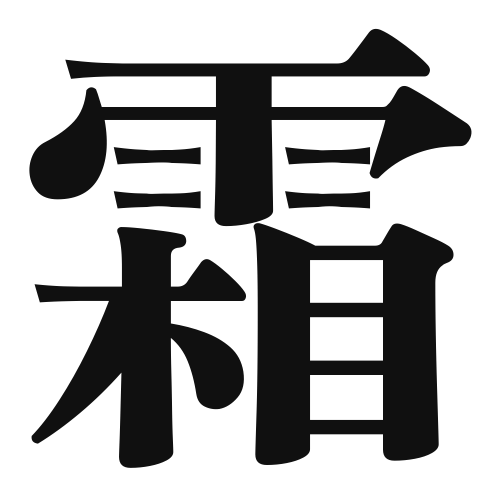1. Overview of Meaning
The kanji “霜” (shimo) means “frost.” It refers to the icy crystals that form on surfaces when the temperature drops below freezing, typically seen in the early morning during colder months.
2. Formation and Radical
Formation of the Kanji: The kanji “霜” is a compound character (会意文字) that combines the elements for “rain” (雨) and “frost” (相). The “雨” radical indicates that it is related to weather phenomena.
Radical: The radical of “霜” is “雨” (rain), which is commonly found in kanji related to weather and precipitation.
3. Examples of Usage
Common Words and Phrases:
- 霜降り (しもふり, shimofuri) – “frost descent,” referring to the time when frost begins to appear.
- 霜月 (しもづき, shimotsuki) – “frost month,” which is November in the traditional Japanese calendar.
Example Sentences in Daily Conversation:
- 今朝は霜が降りていた。 (Kesa wa shimo ga orite ita.) – “This morning, there was frost.”
- 霜月は寒くなります。 (Shimotsuki wa samuku narimasu.) – “November will become cold.”
4. Synonyms and Antonyms
Similar Kanji:
- 氷 (こおり, koori) – “ice,” which refers to frozen water, but is different from frost as it is a solid state of water.
- 雪 (ゆき, yuki) – “snow,” which is precipitation in the form of ice crystals, but occurs in larger quantities than frost.
Antonyms:
- 熱 (ねつ, netsu) – “heat,” which is the opposite of frost, indicating high temperatures.
5. Cultural and Historical Background
Relation to Japanese Culture: Frost is often associated with the changing seasons in Japan, particularly autumn and winter. It signifies the transition from warmth to cold.
Proverbs and Idioms:
- 霜を見てから草を刈れ (Shimo o mite kara kusa o kare) – “Mow the grass after seeing the frost,” which means to be cautious and wait for the right moment before taking action.
